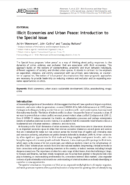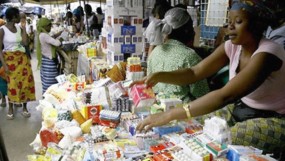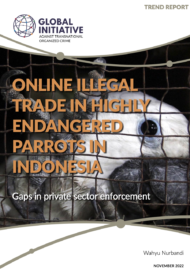Posted on 06 Sep 2013
The raiders moved with impressive speed. In under 96 seconds they entered Amsterdam’s Kunsthal Museum, stole between €18 million and €200 million in art, and vanished. However, for all their skill in executing the crime the thieves apparently didn’t factor in the difficulty in fencing off well-known works by Monet, Matisse, and Picasso. Four months later, with the police closing in the mother of one of the chief suspects reportedly burned the paintings in the small Romanian village of Carcaliu. The Romanian Carcaliu gang pleaded guilty as charged on September 10th.
The international art market has grown steadily in value over the last sixty years, as a dwindling supply of in-demand artworks and an increase in the number of high value collectors have pushed art prices to stratospheric levels. It is no longer uncommon to find artworks valued over $1 million, while the most expensive pieces are valued at well over $100 million. The rapid increase in the value of art has increased the interest of organized crime in the trade. Estimated at between $2 billion – $6 billion the illicit market in art and antiquities is amongst the most lucrative that organized crime groups engage in.
The illicit art market can be divided into the broad areas: the diversion of antiquities, art counterfeiting, and fine art theft. The diversion of antiquities is the most common, and least organized, activity. Antiquities are easily stolen from museums or archeological sites and sold to collectors, often via online sites such as e-bay. The ubiquity of artifacts, and lack of skill necessary to loot them makes the trade an ideal funding source for both criminal organizations and insurgent groups particularly in conflict zones, or fragile and developing states. The general dearth of legal sanctions and specialist law enforcement units dedicated to artifact trafficking makes the trade a nearly risk-free endeavor.
Counterfeiting involves the creation of works that are either facsimiles of high-value art, or are done in the style of a highly valued artist. The resulting profits can be huge, with one syndicate in New York reportedly raking in $80 million from 63 counterfeited works. Counterfeiting operations rely both on skilled artists as well as respectable art dealers able to win the trust of buyers.
Finally, fine art theft is most high profile and yet infrequent form of criminal activity in the art world. The increasing value of art has led many museums and galleries to upgrade their security systems. This has forced a professionalization in fine art theft, incentivizing the development of well-trained gangs that are able to disable security systems and strike quickly. While criminal gangs can achieve great success in stealing famous pieces of art, many, much like the Romanian gang, flounder when they attempt to sell it. Valuable art is easily recognizable, and stolen art is often tracked by organizations such as the Art Loss Register. Therefore, most successful art theft gangs have either pre-identified buyers for their stolen works, or are connected into the international illicit art market.
It is highly likely that the illicit market for art will grow. The profits are simply too high, and the demand for art and antiquities too lucrative, for organized crime groups to pass up. However, it remains to be seen which form of art crime comes to dominate, and whether raids like that on the Kunsthal Museum become the norm.
Un mercado enardecido: el comercio de arte y antigüedades
Los ladrones se movieron a una velocidad impresionante. En menos de 96 segundos, ingresaron al Museo Kunsthal de Ámsterdam, robaron entre 18 y 200 millones de euros en arte, y desaparecieron. Sin embargo, a pesar de todas las habilidades que demostraron en la ejecución del delito, los ladrones aparentemente no tuvieron en cuenta la dificultad de traficar obras reconocidas de Monet, Matisse y Picasso. Cuatro meses después, con la policía pisándole los talones, parece que la madre de uno de los principales sospechosos quemó las pinturas en el pequeño pueblo rumano de Carcaliu. La banda rumana de Carcaliu se declaró culpable el 10 de septiembre.
El valor del mercado internacional de arte ha observado un crecimiento progresivo durante los últimos sesenta años. Al mismo tiempo, existe una oferta menguante de arte a pedido y un aumento en el número de coleccionistas de alto valor que ha empujado el precio de las obras de arte a niveles estratosféricos. Hoy por hoy, es común encontrar obras valuadas por encima del millón de dólares, y las más caras están valuadas en más de $100 millones. El rápido aumento en el valor del arte ha acrecentado el interés del crimen organizado en este sector. El mercado del arte y antigüedades, estimado entre 2 y 6 billones de dólares, está entre los más redituables para las organizaciones criminales.
El mercado ilícito del arte puede dividirse en dos grandes áreas: el desvío de antigüedades, la falsificación de pinturas, y el robo de obras de gran importancia. El desvío de antigüedades es el más común y menos organizado. Las antigüedades se roban fácilmente de museos o de sitios arqueológicos para ser vendidas a coleccionistas, a menudo mediante sitios web como e-bay. La omnipresencia de objetos antiguos y la falta de habilidades requeridas para cometer este delito hacen de este comercio una fuente de financiamiento ideal tanto para organizaciones criminales como para grupos insurgentes, particularmente en zonas de conflicto o en estados frágiles y en desarrollo. La falta general de sanciones legales y unidades policiales especializadas dedicadas al tráfico de objetos antiguos hacen que este comercio sea casi un esfuerzo libre de riesgos.
La falsificación incluye la creación de obras que son una reproducción idéntica de una obra de arte de mucho valor, o que están hechas con el estilo de artistas muy reconocidos. Las ganancias resultantes pueden ser enormes: según se informa, una pandilla en Nueva York acumuló $50 millones por 63 obras falsificadas. Estas operaciones dependen tanto de artistas habilidosos como de marchantes de arte respetados capaces de ganarse la confianza de los compradores.
Por último, el robo de obras de gran importancia es de un perfil más alto y menos frecuente. El creciente valor del arte ha llevado a que muchos museos y galerías mejoren sus sistemas de seguridad. Esto ha generado una profesionalización del robo de estas pinturas u obras de alto valor, incentivando el desarrollo de bandas bien entrenadas capaces de desmantelar los sistemas de seguridad y dar golpes rápidamente. Sin embargo, aunque pueden llegar a robar alguna pieza de arte famoso, muchas, como en el caso de esta banda rumana, tienen dificultades al momento de intentar venderlas. Este tipo de arte es muy fácilmente reconocible, y las obras robadas suelen ser rastreadas por organizaciones como Art Loss Register; por lo tanto, los ladrones más exitosos son aquellos que tienen compradores preestablecidos, o están conectados con el mercado ilícito internacional.
Es altamente probable que el mercado ilícito de arte siga creciendo. Las ganancias son simplemente demasiado altas y la demanda de arte y antigüedades demasiado redituable como para que estos grupos criminales las dejen pasar. No obstante, resta ver qué tipo de delito en el mundo del arte pasa a ser el dominante, y si asaltos como en el del Museo Kunsthal se convierten en delitos frecuentes.



